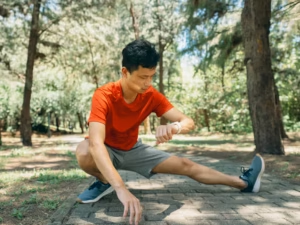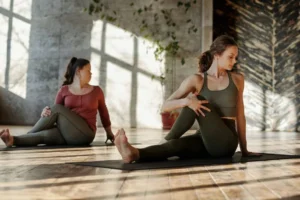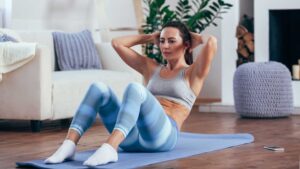Finding time for a full workout can feel like an impossible task. Between work, family, and social commitments, hitting the gym for an hour often falls to the bottom of the to-do list. But what if improving your health didn’t require intense, lengthy exercise sessions? What if small, simple movements throughout your day could lead to significant health benefits?
The idea of integrating minor physical activities into your daily routine is gaining traction, and for good reason. These small daily movements, often called “movement snacks,” are manageable, sustainable, and surprisingly effective. They focus on breaking up long periods of sitting and weaving activity into the things you already do.
This post will explore how you can easily incorporate these small movements into your life. We’ll cover the powerful benefits they offer, provide practical tips to get you started, and address common obstacles you might face. By the end, you’ll have a clear path to boosting your well-being, one small step at a time.
The Power of Small Movements
We often think of exercise in terms of scheduled, high-intensity workouts. While those are certainly beneficial, the cumulative effect of small, consistent movements can be just as impactful. Our bodies are designed to move, and modern sedentary lifestyles—sitting at a desk, driving in a car, or lounging on the couch—work against our natural physiology.
Prolonged sitting has been linked to various health issues, including obesity, high blood pressure, and poor circulation. Small daily movements counteract these effects by keeping your muscles engaged, your blood flowing, and your metabolism active. Instead of dedicating a solid block of time to exercise, this approach encourages you to find opportunities for activity throughout your day.
Think of it as a steady drip of wellness rather than a sudden downpour. A five-minute walk, a few stretches while waiting for your coffee to brew, or taking the stairs instead of the elevator might seem insignificant on their own. However, when repeated consistently, these actions add up to a more active lifestyle, leading to profound improvements in your overall health without the pressure of a formal fitness routine.
Simple Ways to Incorporate Small Movements
Adding more movement to your day doesn’t need to be complicated. The key is to build on your existing habits and find simple ways to be more active.
At Your Desk
If you have a desk job, you’re likely sitting for hours at a time. Breaking up this sedentary period is crucial.
- Stand and Stretch: Set a reminder to stand up, stretch your arms, and roll your neck and shoulders every 30-60 minutes.
- Take “Walking Meetings”: If you have a phone call that doesn’t require you to be at your screen, walk around your office or home while you talk.
- Desk Exercises: Simple movements like calf raises, desk push-ups, or chair squats can be done discreetly and effectively.
At Home
Your home is full of opportunities to move more.
- Move During Commercials: If you’re watching TV, use commercial breaks to do jumping jacks, push-ups, or planks.
- Workout While You Wait: Waiting for water to boil or food to microwave? Do some countertop push-ups or squats.
- Make Chores Active: Turn up the music and put more energy into your cleaning. Mopping, vacuuming, and scrubbing can be a great workout.
While Out and About
Incorporate movement into your errands and commutes.
- Park Farther Away: Choose a parking spot at the far end of the lot to get in some extra steps.
- Take the Stairs: Consistently choose the stairs over the elevator or escalator. This is a fantastic way to build leg strength and improve cardiovascular health.
- Walk or Bike for Short Trips: If you’re heading somewhere close, leave the car at home and opt to walk or cycle instead.
Benefits of Small Movements
The consistent practice of small daily movements offers a wide range of physical and mental health benefits.
Physical Health Benefits
- Improved Metabolism: Regular, small bursts of activity can help keep your metabolism fired up, which aids in weight management.
- Better Circulation: Moving throughout the day prevents blood from pooling in your legs and improves overall circulation, reducing the risk of clots and varicose veins.
- Increased Energy Levels: It might sound counterintuitive, but moving more can actually boost your energy. A short walk can be more effective at waking you up than a cup of coffee.
- Stronger Bones and Muscles: Weight-bearing activities, even small ones like taking the stairs, help maintain bone density and muscle mass, which is especially important as we age.
Mental Health Benefits
- Reduced Stress: Physical activity is a proven stress reliever. Even a few minutes of movement can help lower cortisol levels and promote a sense of calm.
- Enhanced Mood: Movement releases endorphins, the body’s natural mood-lifters. Sprinkling activity throughout your day can lead to a more stable, positive mood.
- Improved Focus and Creativity: Taking short breaks to move can clear your head, improve concentration, and spark new ideas when you return to a task.
Overcoming Obstacles
Even with the best intentions, starting a new habit can be challenging. Here are some common barriers and how to overcome them.
- “I forget to move.”
-
- Solution: Use technology to your advantage. Set reminders on your phone, calendar, or wearable fitness tracker to nudge you to get up and move every hour.
- “I feel awkward exercising at work.”
-
- Solution: You don’t have to do a full-blown workout. Simple stretches, a walk to the water cooler, or choosing a printer farther from your desk are all discreet ways to add movement.
- “I don’t have enough time.”
-
- Solution: Reframe your thinking. This isn’t about finding an extra hour; it’s about using the minutes you already have. Focus on “movement snacks” that are just one to five minutes long. These small pockets of time add up.
Frequently Asked Questions (FAQs)
How much movement is needed to see benefits?
The goal is consistency, not intensity. Aim to break up long periods of sitting at least once every hour. Even 2-5 minutes of movement can make a difference. The cumulative effect over a day and week is what drives the benefits.
Can small movements replace my regular workouts?
While small daily movements are incredibly beneficial, they shouldn’t necessarily replace more structured exercise, especially if you have specific fitness goals. Think of them as a supplement. They ensure you stay active on days you can’t make it to the gym and combat the negative effects of a sedentary lifestyle.
What if I have mobility issues?
There are many ways to incorporate small movements, even with physical limitations. Chair exercises, gentle stretching, and simple seated movements can still improve circulation and muscle tone. Consult with a physical therapist to find safe and effective movements for your specific needs.
How do I stay motivated?
Start small and focus on one or two new habits at a time. Track your progress and notice how you feel. As you start to experience more energy and a better mood, that positive reinforcement will become your biggest motivator. Partnering with a friend or colleague can also help keep you accountable.
Start Your Journey to Better Health Today
Improving your health doesn’t require a radical overhaul of your lifestyle. By embracing the power of small daily movements, you can make significant strides in your physical and mental well-being. The key is to start small, be consistent, and celebrate the progress you make along the way.
Look for opportunities in your daily routine to stand, stretch, and walk. Each small action is a step toward a healthier, more active you. Don’t wait for the “perfect” time to start exercising. Your journey to better health can begin right now, with the very next step you take.




